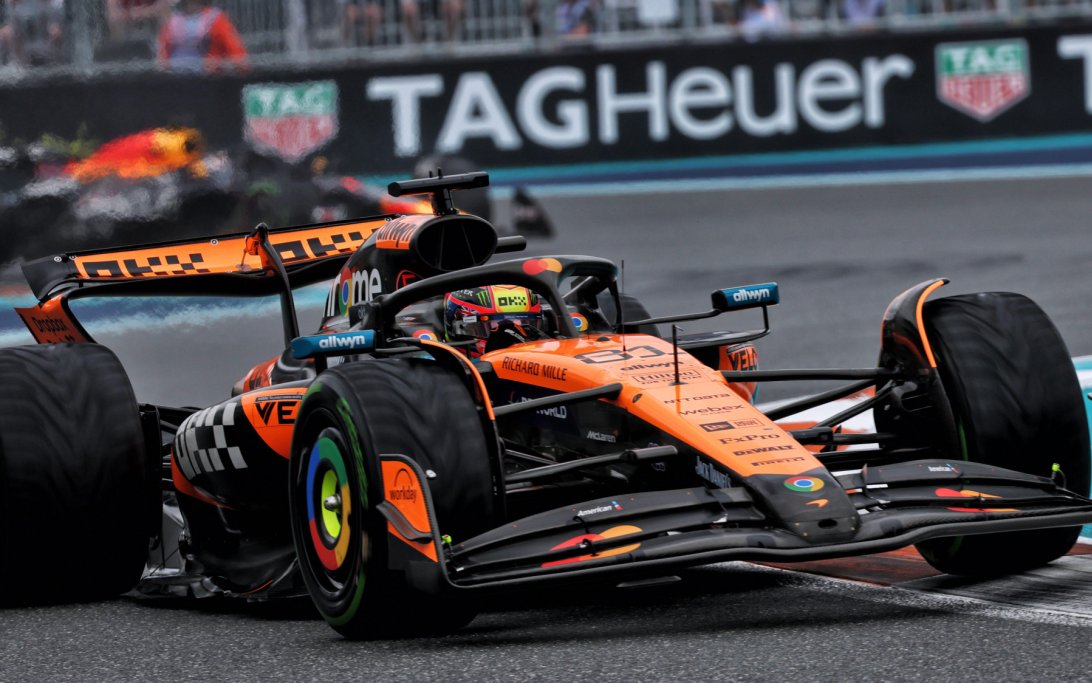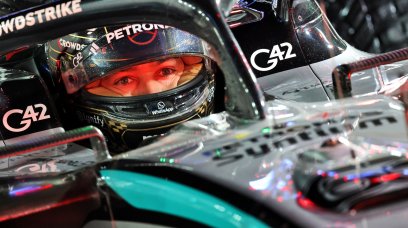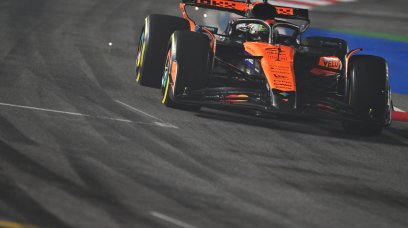As we previously explained in another article, McLaren has a decisive advantage over the rest of the F1 field when it comes to tyre management, and chiefly degradation.
This is not just usually degradation, but also thermal deg, with Red Bull in particular raising doubts about the legality of the MCL39's inner brake drums, after obtaining thermal images allegedly showing cool spots deep within the complex cooling system of the drum.
In Miami, the FIA carried out an in-depth check of the brakes, with nothing illegal found. RacingNews365 understands that rival teams are now studying closely McLaren's design and putting resources into developing their own versions to ensure McLaren alone does not benefit.
It is becoming increasingly clear that the Woking squad has managed to achieve the goal of keeping operating temperatures and tyre pressures under control, and isolating them from the heat produced by the brakes.
McLaren has cleverly used a sort of micro net of PCM, Phase Changing Materials, inside its brake drums.
This is a mesh composed of tiny tubes containing metal alloys, which have a melting point, depending on the type of metal used, of between 120 and 200 degrees celsius.
The alloys, imagine a section of iron wire covered in a thin plastic casing, form a thin mesh membrane inside the drum and its ducts. The PCMs are able to absorb heat up to the melting point, much the same principle as an ice cube in a drink.
The ice cube maintains its temperature of zero degrees until it melts, with these thin metal alloys absorbing the heat until it reaches the melting point. It has the effect of keeping the air under control, preventing the air passing through the drum from raising the temperature and transfering heat to the drum.
As indicated above, rival teams such as Mercedes and Red Bull are evaluating a rapid application of the system for upcoming races, with Ferrari also understood to be looking at the system, as are the remaining teams on the grid.
A first version could be introduced in time for the Spanish GP in June, but given the turnaround time, and the already big flexi-wing changes coming into force in Barcelona, it is more likely another team would wait until the Canadian GP to bring the upgrade - at a circuit where the brakes are a crucial factor in performance.
Also interesting:
Join RacingNews365's Ian Parkes and Nick Golding in a special episode of the podcast, as they are joined by former F1 team principal and friend of the channel Otmar Szafnauer to look ahead to Imola! Max Verstappen, McLaren and Ferrari are just a few of the talking points.
Rather watch? Then click here!
Don't miss out on any of the Formula 1 action thanks to this handy 2026 F1 calendar that can be easily loaded into your smartphone or PC.
Download the calenderMost read


























Join the conversation!